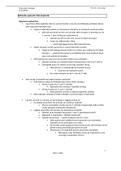Test Bank
For
American Stories:
A History of the United States
R
U
Fourth Edition
SE
H. W. Brands, University of Texas
T. H. Breen, Northwestern University
IS
Ariela J. Gross, University of Southern California
O
R. Hal Williams, Southern Methodist University
N
Prepared by
N
Cherry Whipple
O
C
ED
M
,Table of Contents
1 New World Encounters, Preconquest–1608 1
2 England’s New World Experiments, 1607–1732 44
3 Putting Down Roots: Opportunity and Oppression
in Colonial Society, 1619–1692 83
4 Experience of Empire: Eighteenth-Century America, 1680–1763 123
5 The American Revolution: From Elite Protest to Popular Revolt, 1763–1783 167
6 The Republican Experiment, 1783–1789 206
R
7 Democracy and Dissent: The Violence of Party Politics, 1788–1800 245
U
8 Republican Ascendancy: The Jeffersonian Vision, 1800–1814 286
9 Nation Building and Nationalism, 1815–1825 325
SE
10 The Triumph of White Men’s Democracy, 1824–1840 362
11 Slaves and Masters, 1793–1861 401
12 The Pursuit of Perfection, 1800–1861 438
13
14
An Age of Expansionism, 1830–1861
The Sectional Crisis, 1846–1861 IS 476
511
O
15 Secession and the Civil War, 1860–1865 548
16 The Agony of Reconstruction, 1865–1877 586
N
17 The West Exploiting an Empire, 1849–1902 625
18 The Industrial Society, 1850–1901 663
N
19 Toward an Urban Society, 1877–1900 704
O
20 Political Realignments, 1876–1901 742
21 Toward Empire, 1865–1902 782
C
22 The Progressive Era, 1895–1917 818
23 From Roosevelt to Wilson in the Age of Progressivism, 1900–1920 858
ED
24 The Nation at War, 1901–1920 898
25 Transition to Modern America, 1919–1928 938
26 Franklin D. Roosevelt and the New Deal, 1929–1939 975
M
27 America and the World, 1921–1945 1013
28 The Onset of the Cold War, 1945–1960 1055
29 Affluence and Anxiety, 1945–1960 1092
30 The Turbulent Sixties, 1960–1968 1128
31 To a New Conservatism, 1969–1988 1169
32 Into the Twenty-First Century, 1989–2016 1209
iii
Copyright © 2018, 2015, 2012 Pearson Education, Inc. All rights reserved.
, Chapter 1: New World Encounters, Preconquest–1608
Multiple-Choice Questions
1) The first human migrants to North America were from __________.
a. Asia
b. Africa
c. South America
d. western Europe
Answer: A
Learning Objective: 1.1 What explains cultural differences among Native American groups before
European conquest?
R
Topic: 1.1 Native Americans before the Conquest
Difficulty Level: Easy
U
Skill Level: Remember the Facts
SE
2) __________ played a major part in facilitating the migration of humans into North America.
a. Cultural preferences
b. Epidemics
c. Warfare
d. Environmental conditions
Answer: D
IS
Learning Objective: 1.1 What explains cultural differences among Native American groups before
O
European conquest?
Topic: 1.1 Native Americans before the Conquest
Difficulty Level: Easy
N
Skill Level: Understand the Connections
N
3) Knowledge of maize, squash, and beans spread __________.
a. west from the Atlantic coast
O
b. south from the Great Plains
c. south from the Pacific Northwest
d. north from central Mexico
C
Answer: D
Learning Objective: 1.1 What explains cultural differences among Native American groups before
ED
European conquest?
Topic: 1.1.1 The Environmental Challenge: Food, Climate, and Culture
Difficulty Level: Easy
Skill Level: Remember the Facts
M
1
Copyright © 2018, 2015, 2012 Pearson Education, Inc. All rights reserved.
, 4) Which of the following was a consequence of the Agricultural Revolution?
a. Indian peoples stopped hunting mammals.
b. Indian peoples gained greater control over their food supply.
c. Epidemic diseases swept across the Americas.
d. Warfare became far less common in the Americas.
Answer: B
Learning Objective: 1.1 What explains cultural differences among Native American groups before
European conquest?
Topic: 1.1.1 The Environmental Challenge: Food, Climate, and Culture
Difficulty Level: Moderate
Skill Level: Understand the Connections
R
5) The Agricultural Revolution allowed the Indians of Mexico and Central America to __________.
a. build more complex societies
U
b. invent the wheel
c. build peaceful societies
d. conquer much of North America
SE
Answer: A
Learning Objective: 1.1 What explains cultural differences among Native American groups before
European conquest?
Topic: 1.1.2 Mexico’s Aztec Empire
Difficulty Level: Moderate
Skill Level: Remember the Facts IS
O
6) Tenochtitlán was the main ceremonial center of the __________.
a. Mayas
N
b. Toltecs
c. Incas
N
d. Aztecs
Answer: D
O
Learning Objective: 1.1 What explains cultural differences among Native American groups before
European conquest?
Topic: 1.1.2 Mexico’s Aztec Empire
C
Difficulty Level: Easy
Skill Level: Remember the Facts
ED
7) __________ groups occupied much of the Atlantic coast from North Carolina to Maine.
a. Hopi
b. Algonquian
M
c. Comanche
d. Seminole
Answer: B
Learning Objective: 1.1 What explains cultural differences among Native American groups before
European conquest?
Topic: 1.1.3 Eastern Woodland Cultures
Difficulty Level: Easy
Skill Level: Remember the Facts
2
Copyright © 2018, 2015, 2012 Pearson Education, Inc. All rights reserved.





